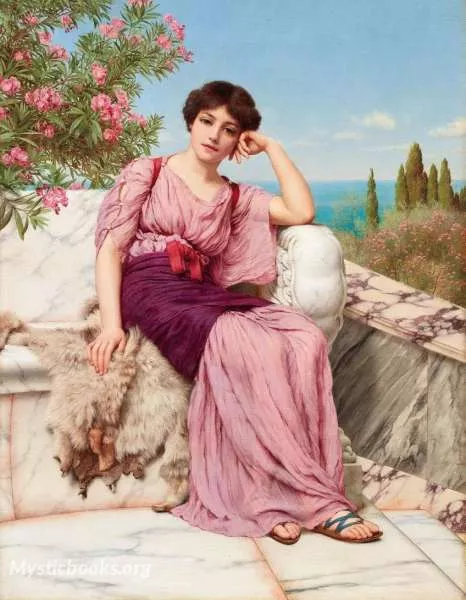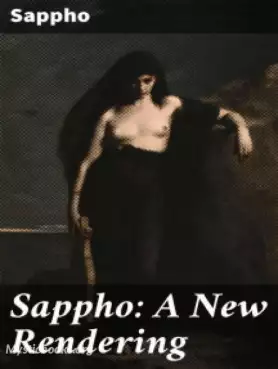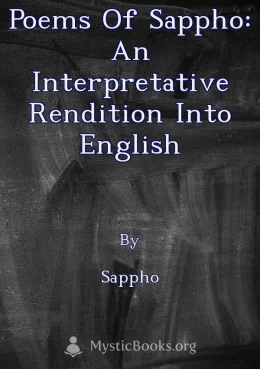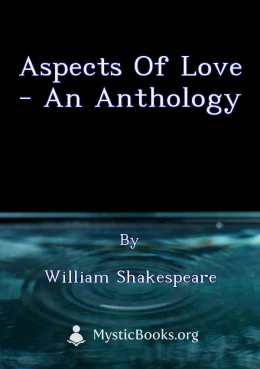
Timeline
Title
Country/Nationality
Sappho
Sappho was a prolific poet, probably composing around 10,000 lines. Sappho was a Greek poet who lived on the island of Lesbos in the 6th century BCE. She was one of the first and most famous female poets in Western literature, and her work was highly regarded in ancient Greece. Sappho's poetry was primarily concerned with love, desire, and relationships, and she is often described as one of the first "love poets." She wrote many poems about her relationships with both men and women, and her work has been celebrated for its emotional depth and intensity. Sappho's poetry has been lost for centuries, but fragments of her work have been preserved in the writings of later ancient Greek and Roman authors, and she remains an important figure in the history of literature.
Little is known about Sappho's life for certain. She was from the island of Lesbos and was probably born around 630 BCE. Tradition names her mother as Cleïs, though ancient scholars may simply have guessed this name, assuming that Sappho's daughter Cleïs was named after her.
Sappho was said to have three brothers: Erigyius, Larichus, and Charaxus. According to Athenaeus, Sappho often praised Larichus for pouring wine in the town hall of Mytilene, an office held by boys of the best families. This indication that Sappho was born into an aristocratic family is consistent with the sometimes rarefied environments that her verses record. One ancient tradition tells of a relation between Charaxus and the Egyptian courtesan Rhodopis. Herodotus, the oldest source of the story, reports that Charaxus ransomed Rhodopis for a large sum and that Sappho wrote a poem rebuking him for this.
Sappho may have had a daughter named Cleïs, who is referred to in two fragments. Not all scholars accept that Cleïs was Sappho's daughter. Fragment 132 describes Cleïs as "παῖς" (pais), which, as well as meaning "child", can also refer to the "youthful beloved in a male homosexual liaison". It has been suggested that Cleïs was one of Sappho's younger lovers, rather than her daughter, though Judith Hallett argues that the language used in fragment 132 suggests that Sappho was referring to Cleïs as her daughter.
According to the Suda, Sappho was married to Kerkylas of Andros. However, the name appears to have been invented by a comic poet: the name "Kerkylas" comes from the word "κέρκος" (kerkos), a possible meaning of which is "penis", and is not otherwise attested as a name, while "Andros", as well as being the name of a Greek island, is a form of the Greek word "ἀνήρ" (aner), which means manThus, the name may be a joke.
Sappho and her family were exiled from Lesbos to Syracuse, Sicily, around 600 BCE. The Parian Chronicle records Sappho going into exile sometime between 604 and 591. This may have been as a result of her family's involvement with the conflicts between political elites on Lesbos in this period, the same reason for the exile of Sappho's contemporary Alcaeus from Mytilene around the same time. Later the exiles were allowed to return.
A tradition going back at least to Menander (Fr. 258 K) suggested that Sappho killed herself by jumping off the Leucadian cliffs for love of Phaon, a ferryman. This is regarded as ahistorical by modern scholars, perhaps invented by the comic poets or originating from a misreading of a first-person reference in a non-biographical poem. The legend may have resulted in part from a desire to assert Sappho as heterosexual.
Books by Sappho

Sappho: A New Rendering
"Sappho: A New Rendering" is a book that contains a new translation of the poetry of Sappho, the ancient Greek poet who lived on the island of Lesbos in the 6th century BCE. Sappho is known for her passionate and emotional poetry, which focuses on lo...

Poems of Sappho: An Interpretative Rendition into English
This book is a collection of poems by the ancient Greek poet Sappho, who is considered one of the greatest poets of all time. The poems are written in a variety of styles, including love poems, hymns, and epigrams. They are full of passion, beauty, a...

Aspects Of Love - An Anthology
This anthology, curated by Tony Addison, explores the multifaceted nature of love through a collection of poems and philosophical works. The anthology takes its inspiration from Plato's *Symposium*, a dialogue exploring different aspects of love thro...